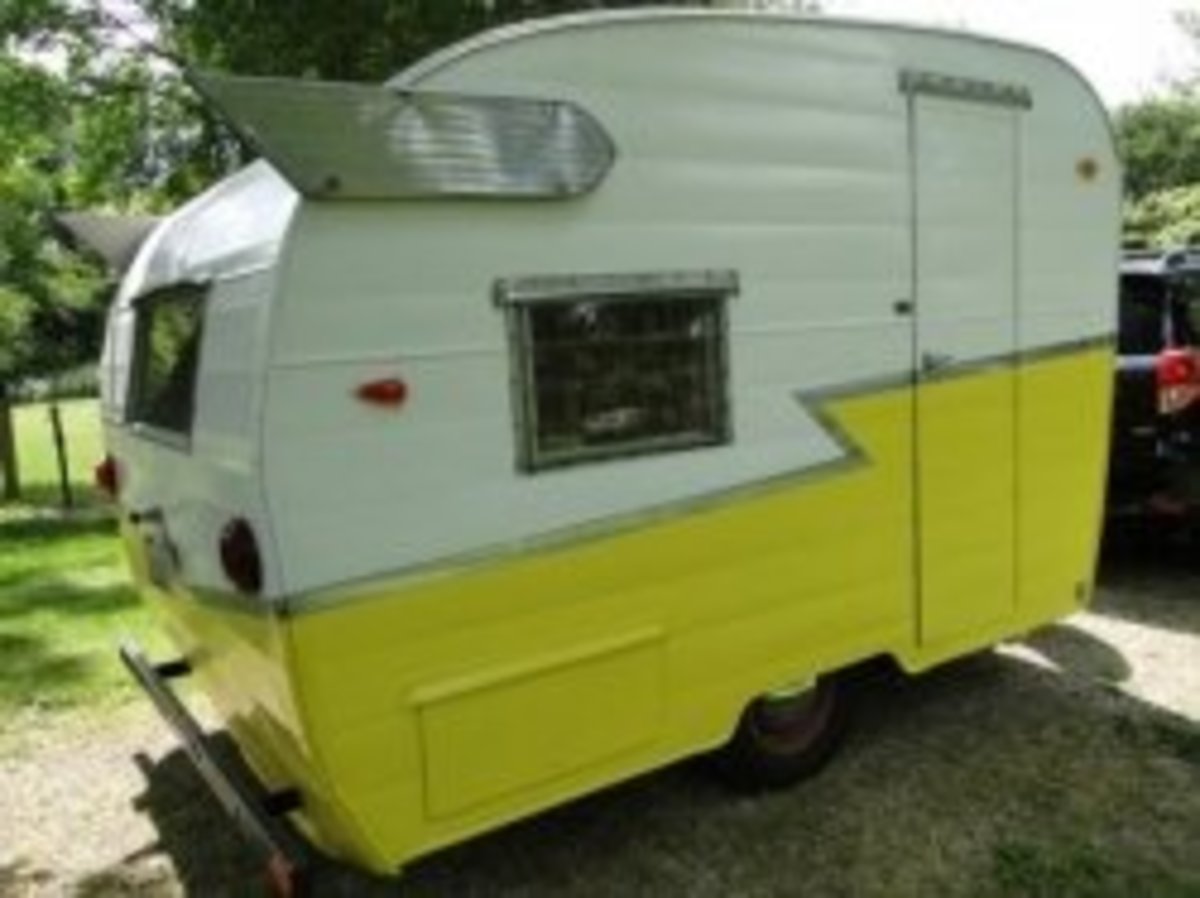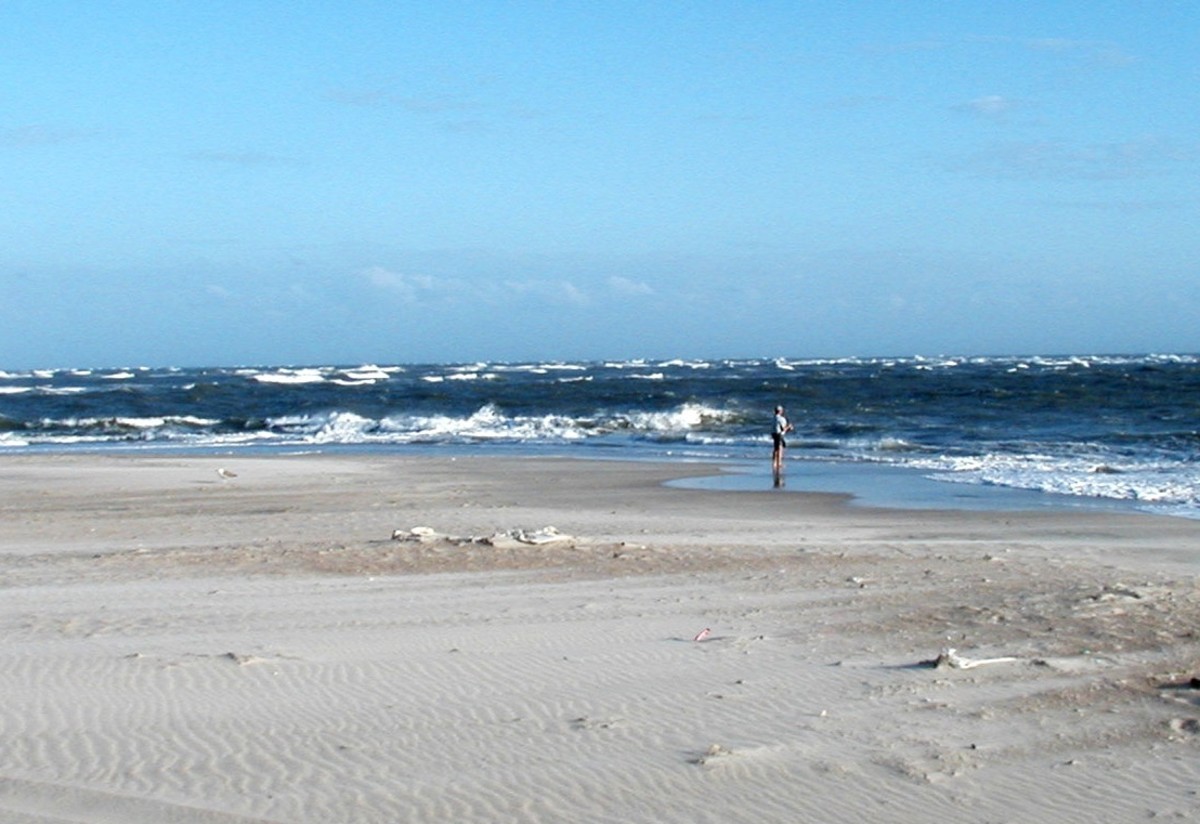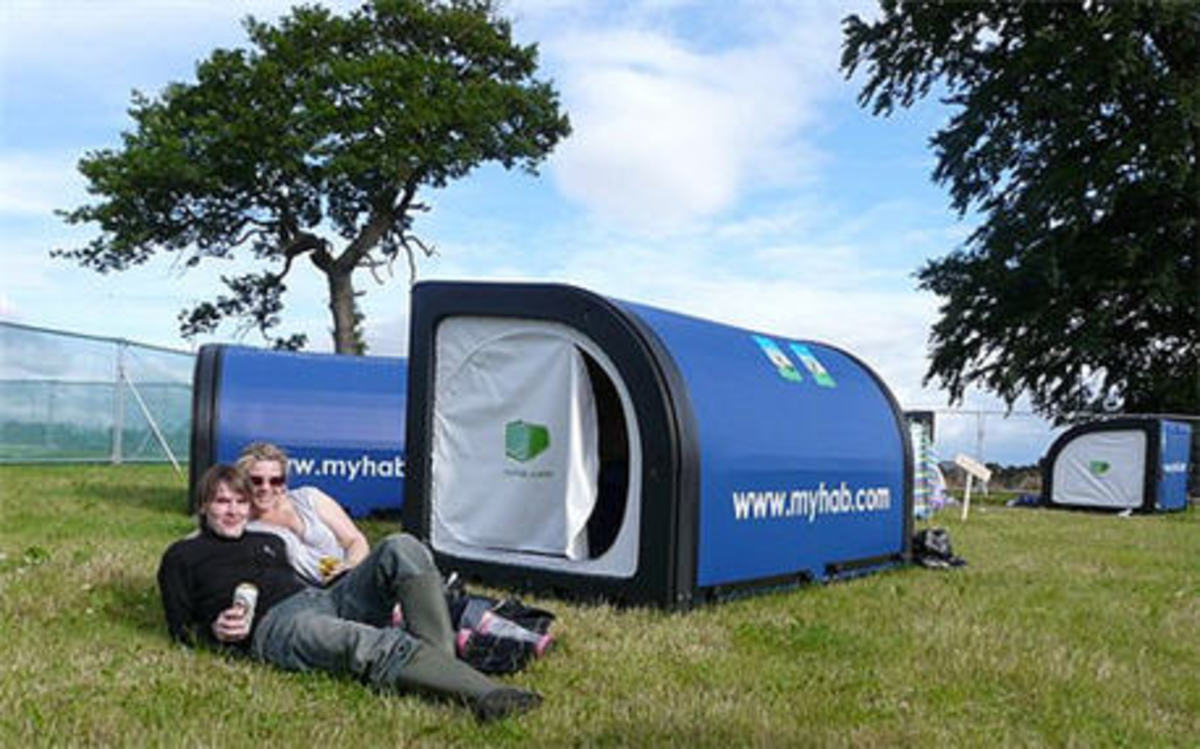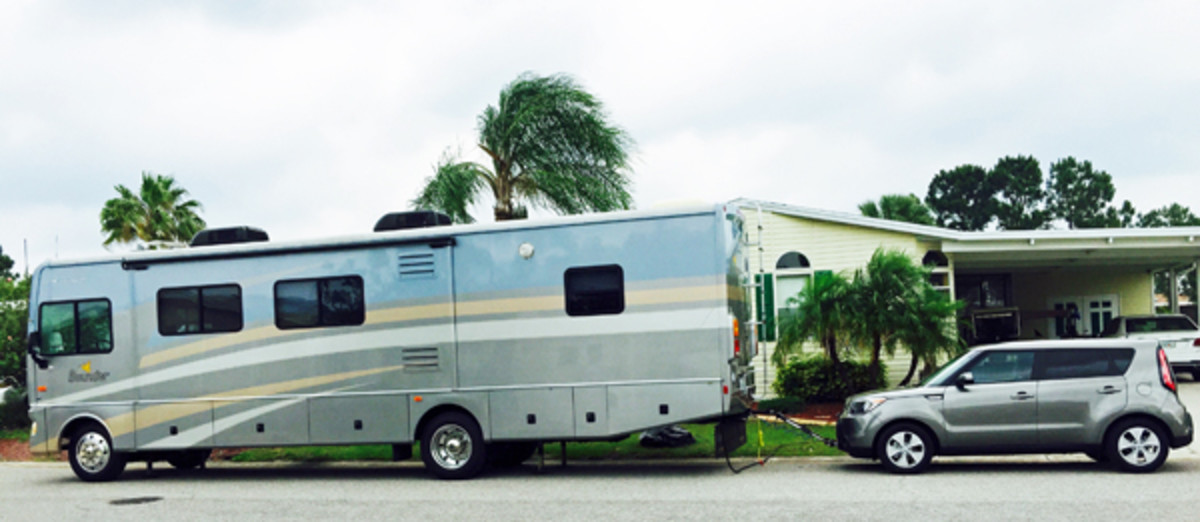Retractable Awnings and Canopies - my love-hate relationship
If you have a sunny porch or deck, you may have thought about getting one of those wonderful roll-up awnings. It's a lovely idea, really: they can shield you from sun or rain and, when not needed, they roll up out of the way.
The more expensive models have electric motors that take away any element of effort. The most expensive models can even protect themselves from high winds by automatically retracting and can deploy themselves just as magically when the sun reaches a certain intensity.
With these marvels of ingenious engineering, a patio awning is there when you need it and out of the way otherwise. Your entire involvement may be pushing a switch on the wall or lazily reaching for a remote control. The newest models are even self cleaning. Truly, these are now no more bother than a refrigerator.
I have never owned such an awning.
My first awning
The first awning I ever encountered on a personal basis was attached to our very first camping trailer. When considering purchasing this trailer, my wife and I had been delighted to see that it had both an awning and a wooden deck. You might think that a deck is an odd thing to have with a camping trailer, but this trailer was a permanent resident of a park, so neither it nor the deck were going to be moved. We imagined ourselves sitting in the shade of that awning, sipping margaritas on lovely summer afternoons. Perhaps a passing shower would sprinkle the campground; we'd sit happy and dry under our protective canopy.
The previous owner of that awning (and the attached camper) told me that the awning was a little "tricky", as he put it. He did have the manufacturer's instructions, which of course would be included with the sale, and he quickly demonstrated lowering and raising the awning. No buttons here; this was strictly a manual affair, but it did not seem difficult. While he had it out, he also pointed out that it had no rips, a matter which seemed very important to me at the time.
We bought that trailer and, after moving in and getting settled, I stepped out on the deck to put down my awning for the very first time.
The gods, who often will toy with me mercilessly in such situations, must have been off gamboling in some other campground. I was able to put down the awning without incident and my wife smiled as she set out our lunch on the deck table. We didn't sip margaritas, but we did sit happily in shade as the sun beat down on the campground.
I'm fibbing a little. When I stepped outside and looked up at the awning, a neighbor noticed my hesitation and yelled "Would you like some help?". I absolutely would, so he came over and showed me what to do.
Those readers who may have experience with awnings that you crank up and down may be puzzled that there was any question at all. The explanation is that this awning was very old. It had gears that would reverse to allow it to go up or down, but no crank to move those gears. All movement came from direct pushing or pulling on the awning arms. I've found a nice pictorial description of how that worked if you are curious.
At dusk, I put the awning back up. Well, my neighbor and I put the awning back up. Again, no problems, no issues. Everything went smooth as silk. Tricky? Apparently the former owner simply lacked intelligence - this awning was not "tricky" at all. This was easy!
I conquer awning mechanics
By the end of the camping season, I didn't even need assistance. On our very last day, I actually put it down and up all by myself. Tricky? I laughed inwardly.
Again, that wasn't quite accurate. My neighbor offered to help, but I refused, telling him that I needed to learn how to do this. I did have a bit of struggle with some false starts, but I got the job done. My neighbor's comment was ""I love living next door to you. You're such fun to watch!"
Winter passed and in the spring of the following year, we returned to camp. It was a few weeks before we had any need for the awning, but that day did come and I stepped out to tackle the job.
My neighbor, seeing me loosen the first of the retaining clips, stopped what he was doing and sat down in a chair to watch. Apparently he anticipated amusement and I did not disappoint him.
Forgetfulness
My first problem was that I had forgotten which side to pull down first. For reasons I still don't understand, this seems to matter with these old manual awnings. There is a "gear side" and a free side. One of those has to be brought part way out, then the other, and then you roll it all out completely. Why this matters is beyond my limited understanding of mechanical things, but it does matter. Get it wrong, and you get a mess.
If I were not a prideful person, I would have simply gone inside, dug out the instructions, and all would have been well. It was the evil grin on my neighbor's face that prevented me from doing that. Instead, I hesitated and stared stupidly at the awning which I had started to pull down on one side,
That hesitation was my undoing, because at that point my wife poked her head out the door and asked "Do you need any help?"
Tactical error
Foolishly, I said "Yes". The utter idiocy of that is beyond belief. She knows nothing about awnings, she had never been involved with this awning in any other capacity than sitting underneath it. Why on earth would any sane person accept her offer to help?
I do not know. I know that I had inward hesitation, but looking at my neighbor still grinning maniacally might have affected my judgement. My wife stepped out of the camper and my neighbor's jaw dropped open in amazed anticipation.
I put on a false front of good cheer and positioned my wife at the gear side of the awning. I was not sure this was the side that should go first, but I decided to unship it from its seat, and I instructed her to hold it while I went to attend to the other end. My mind was still very foggy on exactly how this was supposed to work, but I figured that I would just get started and somehow it would all come together. For inexplicable reasons, I am an incorrigible optimist sometimes.
For a few brief, shining seconds, this project seemed to be going very well. The awning began to unroll and I remember thinking "Wow. This is working". The fact that the awning was forming a 45 degree angle to our trailer had entirely escaped my attention, but as the leading edge approached the top of our picnic table even I realized that something was very, very wrong.
All I would have needed was a few minutes of quiet contemplation to remember how I had done it last year and I'm quite sure that I would have had the situation back under control. Unfortunately, this was not to be because our neighbors noticed that my wife was being buried by the awning and that I was standing off to the side looking stupefied.
Before I had time to get a proper panic state worked up, we had five burly and very mechanically minded men on our deck. Unfortunately, while I have no doubt that any one of them could have calmly and professionally taken over and saved the day, the presence of five men (six if you count me, which no one did) only added to the confusion. However, after a few false starts, and with much manly grunting, we got the awning up to a height that adult humans could stand erect beneath it.
But now there was the matter of the extension arms that would keep the awning from rolling back up. Some nagging memory kept insisting that there was something special I needed to do, something unusual, but I couldn't remember what. Normally these arms have little hand nuts on them that you screw in. Apparently these had broken or rusted away years ago, and some other method was used to secure it. The problem was that I couldn't remember what, and the other five men were arguing among themselves as to how to do it. In the meantime six men had to stand there holding the awning up while their wives stood on their own decks and giggled.
Finally one of them went to get a drill, and it was only when he brought it back that I remembered that there already were holes drilled just for this purpose and that I actually had the pins, too!
After this, things went smoothly, and we enjoyed the rest of the afternoon shielded from the harsh sun. Unfortunately, sunny afternoons must end, and awnings must be retracted once again, and I foolishly assumed that reversing the process would be easier.
It was when I was standing with my head braced against the main arm, trying to keep the awning from retracting while I strained to reach the part of the extension arm that had slipped out onto the deck that our neighbors once again came to my rescue. I don't want to be unappreciative, but the howls of laughter were, I think, quite unnecessary. What's so funny about a man bent over with his head jammed into an awning? I fail to see the amusement in that. I also felt that my neighbor's parting comment about this being better than Laurel and Hardy was completely uncalled for.
Awning tips - wind
Unless you have one of those new fangled automatic systems that will retract with increasing wind speed, you have to be concerned about wind. Even with those systems, a very sudden gust could leave your beautiful and quite expensive awning as a tangled mess of bent aluminum and ripped fabric.
That's why we always put our awning up at night. You never know what might happen while you are sleeping.
That was part of the problem with my ancient awning. It had previously been slightly damaged by wind and the arms which once slid smoothly into place now tended to stick and jam. You can buy replacement parts, but disassembling and reinstalling an awning is something probably best left for professionals or at least for people with high levels of mechanical ability. I looked at the assembly instructions for my awning and literally turned pale. I decided I could live with the sticking.
To avoid more damage, we also used "awning straps". That's just a long strap that you run across the front of the awning and tie down securely. We had deck railings to tie to, but tent stakes are also used. The strap is not going to protect you from very strong winds, but it could save you from a quick gust.
Rain
An awning will keep you protected from rain. However, if you simply deploy the awning in a level plane, there is a good chance that water will puddle up in the center. The fabric, having some natural elasticity, will bend, allowing more water to accumulate. Soon enough, there is a large pool of water in the center of the awning.
Water is heavy - a bit over eight pounds per gallon. It can stretch the fabric permanently, which is bad enough, but it can also apply enough pressure to bend those aluminum arms or even bring the whole mess crashing to the ground. I've never had that happen to one of our awnings, but I've seen it happen to other people.
The way to avoid that is to leave one side of the awning lower so that water can run off more easily. My wife hated that tipping. She said it looked "goofy" and implored me to use the minimum possible slant. She retained that attitude until she saw a fellow camper lose their awning entirely from insufficient slanting. After that, she didn't care how silly it looked: we always had the most extremely tipped awning in the camp thereafter.
Cleaning
If you Google about for "cleaning awnings", you'll find pictures of happy looking people employing long armed brushes to clean their awnings. That might be possible in some situations, but if your awning is over a deck that is similar in size to the expanse of the awning, it may not be so easy to reach the surface.
That was the situation I faced at both my trailers. I was either forced too close or too far away and was unable to reach most of the awning.
Attacking it from the roof seemed reasonable, but I had already seen one such hopeful camper fall onto his awning while attempting exactly that. He wasn't hurt, but his awning definitely was. I gingerly tried it from the roof once, but I was afraid to stand up and lean into the work, so the accumulated mildew stayed just where it was.
I finally settled for spraying with a cleaning solution, rolling it up in hopes that friction from that process would both distribute the cleaner on both sides and help loosen things up, letting it back down after a period of time and hosing it off. That method was less than ideal, but it did work to some extent.
Rips
Our very old awning did eventually fray enough that the edges started to give way. You can have awnings repaired, but of course that involves removing the awning from the frame, which was not something I felt capable of doing. As I felt it senseless to invest much money in something so old, I resorted to the tried and true duct tape repair technology well known to all home handymen.
Duct tape is available in many colors now, so we found something that wouldn't be quite as jarring as plain black or grey and I sealed the tears. I had to replace it frequently, but the duct tape prevented the tears from becoming worse.
I see that they make "Awning repair tape" now. That's probably even better than duct tape.
Lubrication
You'll find various schools of thought on this. I tried rubbing my awning arms with a candle, but I also tried WD-40 and silicon spray. As noted above, the arms on our first trailer were slightly kinked, so really no amount of lubrication could overcome that. Our next trailer had a newer and undamaged awning; I used silicone spray on that and light "sewing machine" oil up in the gear parts.
The really important part is to clean stuff out before you slide the arms back to their closed position. At our second trailer, we had a lot of leaf litter that would drift in. My first foolish thought was to use a leaf blower, but that just drove debris out of sight. From then on, I took the time to manually pick out every bit I could and then carefully got at the rest with a rag I had saturated with bowling alley wax. The sticky wax would pick up small bits I could not get with my fingers.
Because some litter would always seem to find its way out of sight anyway, I experimented with various methods of plugging up gaps with wax. I don't know how much any of that really helped, but having had such difficulty with our first awning made me excessively conscious of interference.
Enjoy your awning
Although this tale of trials and tribulations might make it sound like owning and awning is a commitment to a lifetime of maintenance, it's really not. Even with our very difficult original awning, we received much more pleasure than pain.
Our second awning, although much larger and a bit more difficult to clean because of our deck, was really almost no trouble at all.
The first time I saw a neighbor casually push a button in his very expensive new camper and smugly watch his awning roll out, I was transfixed. How easy is that? When the campground later had very large and fully automatic awnings installed over their outdoor restaurant deck, I marveled at the wind sensors that would protect them from storms. Those cost a pretty penny, I'm sure, but I oohed and aahed like everyone else.
If you have an open deck or patio, a retractable awning is a worthwhile investment. You'll love it, I promise.








